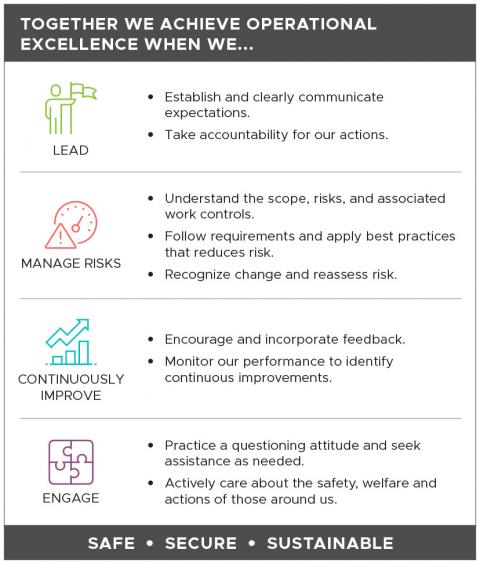Environmental
Management
Environmental
Management
Providing technical solutions
for nuclear waste processing
and environmental remediation
Providing technical solutions
for nuclear waste processing
and environmental remediation
The 560-acre Hanford site is a contiguous shrub-steppe ecosystem featuring the longest free-flowing stretch of the Columbia River. The Hanford Reach became the U.S. Fish and Wildlife Service’s first national monument in 2000.
Photo courtesy of the Washington State Department of Ecology
The Manhattan Project and subsequent Cold War brought about the most technically complex environmental challenge in the world: the Hanford site.
PNNL has helped to advance the Hanford environmental management mission since the 1960s. Our historical knowledge and continued stewardship of unique scientific and technical expertise are foundational to the cleanup of legacy waste. PNNL’s efforts are in support of the Department of Energy’s Office of Environmental Management (DOE-EM) mission, through multiple DOE offices and contractors.
Legacy waste is one of DOE’s most technologically challenging programs. Cleanup efforts cover over a million acres across 16 sites in 11 states and include 1.7 trillion gallons of contaminated groundwater, 90 million gallons of radioactive waste safely stored in 230 tanks, and an estimated 40 million cubic meters of contaminated soil and debris.
The laboratory helped develop the waste treatment processes at Hanford, Savannah River, and West Valley, and provided the technical foundations for remediation across the DOE-EM complex to protect human and environmental health.
PNNL is called on to solve these complex environmental challenges via scientific expertise, technical defensibility, systems integration (which supports tank waste processing), environmental remediation, and site stewardship. Our expertise in key areas–tank waste chemistry, fluid dynamics and scaling, waste forms, nature and extent of contamination, remedial systems engineering, safety bases, and decision support–provides a critical foundation that advances the DOE-EM mission.
Featured Research
The Youth Are Our Future: Mentor Mariefel Olarte Invests in Interns
Global Experts Address Workforce Shortages in Environmental Remediation
Molecular-Level Understanding of How Electrolytes Affect Boehmite Particle Aggregation
Recent News
PNNL Scientist Elected AAAS Fellow
PNNL Engineers Receive Awards at AIChE
Kevin Rosso Named American Geophysical Union Fellow
Facilities
Related Divisions
Related Links
Brochures
Contacts
PNNL's Operational Commitment to Sustainability

At PNNL, "operational excellence" means working passionately with our team every day to achieve success; learning from our experiences; doing our best to deliver products and services while maintaining our commitment to safety, health, and environmental stewardship; and giving our customers and the nation the greatest value for their investments. Learn more at the PNNL Operational Excellence website.

Environmental elements of the policy are further articulated under the Sustainability M&O Program. The Site Sustainability Plan contains the environmental goals, action plans, and progress toward achieving the goals. Additional Laboratory-wide sustainability performance and accomplishments are provided in the PNNL annual Site Sustainability Report. Learn more at the PNNL Sustainability website.

Read PNNL's environmental policy.





